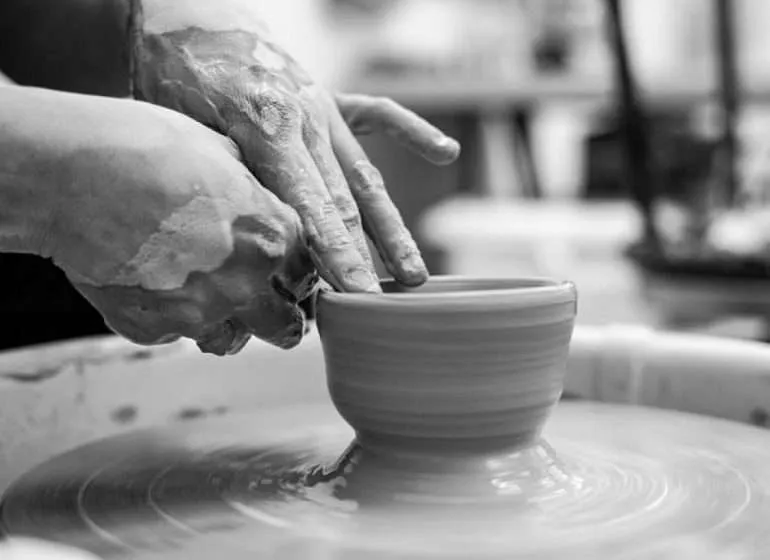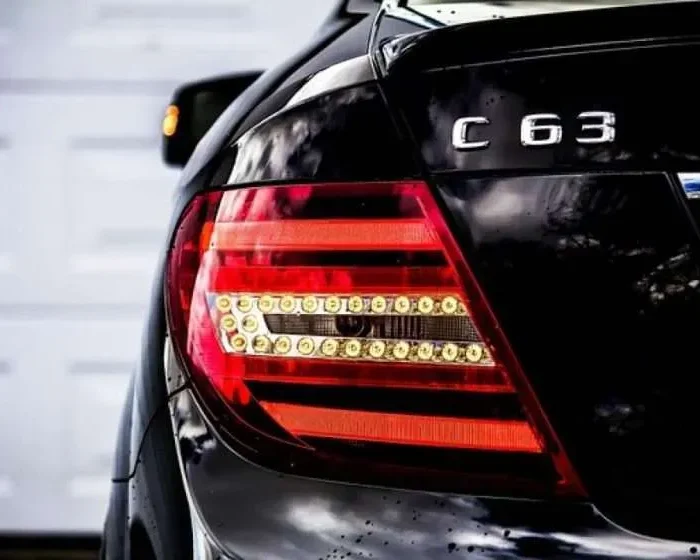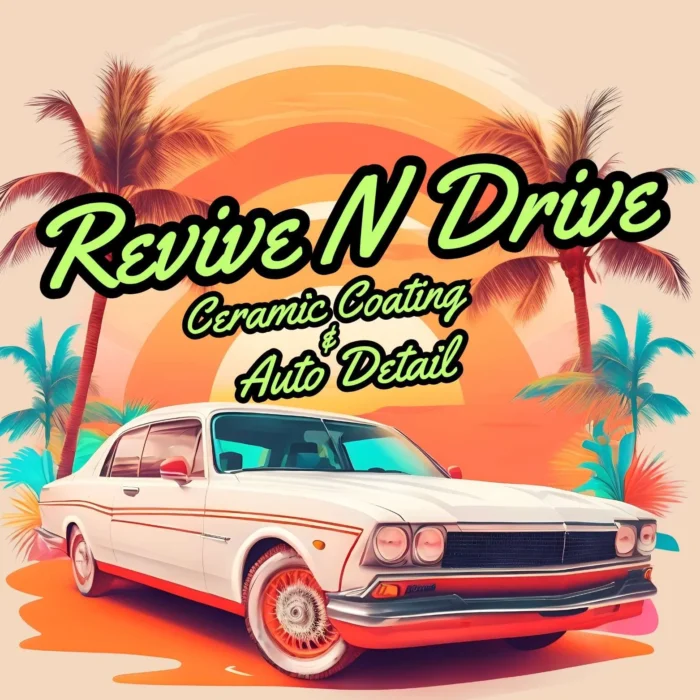Are you tired of traditional waxing methods that offer limited protection for your car’s paint? Enter ceramic coatings—a modern solution that not only provides an immaculate shine but also acts as a protective shield against environmental hazards. But before diving into this world of high-tech car care, it’s essential to understand the varying grades available.
Just like searching for the perfect cup of coffee, selecting the right ceramic coating can be a little overwhelming with all the options on the market. From entry-level DIY kits to professional-grade products, each offers unique benefits tailored to different needs and budgets.
Whether you’re a seasoned car enthusiast or someone simply looking to give their vehicle an edge in everyday protection, knowing the differences between these grades can be a game-changer. So, buckle up as we explore the nuances of ceramic coatings, helping you make an informed decision that aligns perfectly with your car-care ambitions.
What Are Ceramic Coatings Made Of?
At their core, ceramic coatings primarily consist of silicon dioxide (SiO2), derived from materials like quartz or sand. When applied to a vehicle’s surface, this compound forms a microscopic, glass-like layer, creating a durable and hydrophobic seal that repels water and dirt.
The Role of Nanotechnology
But there’s more to these coatings than meets the eye. The magic truly happens on a nano scale. Tiny particles fill the imperfections on the surface of the paint, creating a flat, smooth layer that amplifies shine and minimizes blemishes. This is where nanotechnology comes into play, allowing for that seamless finish we all admire.
Apart from silicon dioxide, some high-end ceramic coatings also include titanium dioxide (TiO2). This compound enhances the coating’s UV resistance, offering better protection against the sun’s harsh rays, which can cause fading and oxidation over time.
In essence, the combination of these elements creates a formidable shield for your car. Whether combating road grime, bird droppings, or acid rain, ceramic coatings act as a powerful layer of defense, leaving your vehicle pristine and radiant.
Understanding the Different Grades of Ceramic Coating
Navigating through the world of ceramic coatings can be tricky, especially when there are various grades, each with its own set of benefits. Let’s break them down so you can choose with confidence.
Consumer-Grade Coatings
For those dipping their toes into the ceramic coating world, consumer-grade options are a fantastic starting point. These handy kits are designed for easy application, typically lasting anywhere from six months to a year. They’re perfect for DIY enthusiasts who want to enjoy added protection without a professional installation.
Professional-Grade Coatings
Looking for something with a little more oomph? Professional-grade coatings might be your answer. These are often applied by trained technicians and can last several years. They offer superior durability and protection, often incorporating more advanced formulas that provide a harder, thicker layer.
Finally, there are hybrid coatings that combine features of waxes and sealants with ceramic technology. Though they don’t last as long as pure ceramic coatings, they offer enhanced gloss and moderate protection, striking a balance between ease of application and longevity.
By understanding these grades, you’ll be better equipped to select the one that perfectly fits your vehicle’s needs and your maintenance preferences.
Benefits of Higher-Grade Ceramic Coatings
When it comes to protecting your vehicle with ceramic coatings, opting for a higher-grade product can bring along a treasure trove of benefits. One of the most notable advantages is the enhanced durability. These coatings are engineered to withstand the harshest conditions, including UV rays, acid rain, and road debris, ensuring your car’s paint remains pristine for years.
Another significant benefit is the ease of maintenance. Higher-grade ceramic coatings create a slick surface where dirt and grime find it tougher to stick, meaning less frequent washes and noticeably easier cleaning. Your car spends more time looking its best with minimal effort.
These advanced coatings also elevate the gloss and depth of your vehicle’s paintwork. The enhanced shine is not just visually appealing, but it also reflects your vehicle’s quality and the care you put into maintaining it. This lasting brilliance helps maintain your car’s resale value, offering long-term financial benefits.
Finally, by choosing a top-tier ceramic coating, you’re investing in peace of mind. Whether it’s protection against the elements or maintaining that showroom shine, these coatings provide a reliable shield for your vehicle, allowing you to drive confidently in any conditions.
Impact of Ceramic Coating Grades on Durability
The durability of ceramic coatings can significantly vary depending on the grade you choose. Understanding this can help you set realistic expectations about how long you can rely on the protection provided by the coating.
Longevity Through Thickness
Higher-grade coatings tend to feature a thicker application, which contributes directly to increased longevity. Professional-grade coatings, for example, often include multiple layers that fortify your vehicle against environmental elements for several years, whereas consumer-grade coatings might last closer to a year.
It’s essential to note that durability isn’t just about how long a coating lasts, but also how well it maintains its protective properties over time. Higher-grade coatings are less likely to degrade quickly, ensuring consistent hydrophobic and UV-resistant features.
There’s also a noticeable impact on resistance to minor scratches and chemical etching. Top-tier ceramic coatings offer a harder surface, which means that they can deflect more of the wear and tear encountered in everyday driving, providing a more robust shield.
When considering a ceramic coating, factoring in the grade is crucial. It’s not just about the upfront cost—it’s about the long-term preservation of your vehicle’s showroom gleam and the level of protection you desire.
How to Choose the Right Grade for Your Needs
Selecting the ideal ceramic coating grade comes down to understanding your specific needs and how you use your vehicle. Here are some key considerations that can guide your decision.
Consider Your Environment
First, think about the environment your car regularly encounters. If you frequently drive in harsh weather conditions or areas with heavy UV exposure, opting for a higher-grade coating might be wise. These coatings offer superior protection against environmental factors, ensuring your vehicle remains looking its best.
Next, assess your budget and maintenance preferences. Professional-grade coatings, while initially more expensive, can save money over time through reduced maintenance and prolonged durability. On the other hand, if you’re comfortable with more regular upkeep, a consumer-grade kit might suit you just fine and offers a cost-effective entry into ceramic coatings.
Also, consider the vehicle itself. For high-end or new cars, investing in top-tier protection can be a beneficial way to preserve value and appearance. For older vehicles, a mid-range solution might strike the perfect balance between cost and protection.
Ultimately, the right grade for you will align with how much effort you’re willing to invest in maintenance, your budget, and the level of protection your driving habits necessitate.
Application Methods for Various Ceramic Coating Grades
The way you apply ceramic coatings can vary significantly depending on the grade you choose, so having a grasp of these methods is crucial to achieving the best results.
For consumer-grade coatings, the process is designed to be DIY-friendly. These coatings are typically available as straightforward kits, complete with all the necessary applicators and instructions. You’ll generally start by thoroughly washing and drying your vehicle, followed by applying the coating using circular motions and allowing it to cure. The simplicity makes it accessible for anyone looking to boost their car care game without professional assistance.
Professional Application
On the other hand, professional-grade coatings require a more meticulous approach and are often best left to the experts. These coatings often involve multi-layer applications, demanding skill, precision, and sometimes specialized equipment to ensure proper bonding and curing. The professional touch not only ensures optimal application but also boosts the durability and effectiveness of the coating.
Lastly, hybrids and mid-tier options offer a mix of DIY ease with some benefits of professional-grade coatings. They can provide a more detailed application process than basic kits but remain manageable for the confident DIYer.
Whichever grade you choose, make sure to follow the specific instructions for that product, as this will maximize the coating’s effectiveness and durability.
Maintaining Different Grades of Ceramic Coatings
Once you’ve decided on and applied the perfect grade of ceramic coating for your vehicle, keeping it in tip-top shape is key to ensuring long-lasting benefits. Regular maintenance isn’t just about preserving aesthetics; it’s about sustaining the protective layer’s effectiveness.
For consumer-grade coatings, maintain a routine washing schedule with pH-balanced soaps to avoid stripping the coating prematurely. Frequent washing helps prevent the buildup of contaminants that can weaken the coating over time. Remember to use soft microfiber cloths to avoid scratching the surface.
Professional-grade coatings typically require less frequent maintenance due to their durability. However, it’s still important to perform regular inspections and cleanings to maximize their lifespan. Avoid automatic car washes with harsh chemicals, as these can degrade the coating more quickly.
All grades of ceramic coatings benefit from periodic top-ups or refreshers, sometimes available as sprays or sealants, designed to rejuvenate the coating and extend its life.
No matter the grade, be mindful of environmental factors like bird droppings or tree sap, which can be particularly corrosive. Promptly addressing these hazards ensures your coating provides continuous protection and keeps your car looking its absolute best.
The Bottom Line: Selecting the Ideal Ceramic Coating Grade
In the ever-growing world of automotive care, choosing the right ceramic coating can seem daunting, but it doesn’t have to be. By understanding the different grades and their respective advantages, you’re better equipped to make an informed decision that caters to your specific needs and preferences.
If you’re just getting started or enjoy a hands-on approach, consumer-grade coatings offer a great balance of protection and ease of application. These coatings are perfect for those who want to dip their toes into ceramic protection without a hefty upfront investment, providing noticeable benefits with straightforward maintenance.
For those seeking the next level of protection and are ready to invest in their vehicle’s longevity, professional-grade coatings offer unparalleled durability and shine. Though they require expert application and a bit more initial cost, the peace of mind and value retention for your vehicle can be well worth it.
Whatever your choice, remember that ongoing maintenance is key to maximizing the benefits of your ceramic coating. A little regular care goes a long way in maintaining that pristine, glossy finish we all admire.
Ultimately, the best ceramic coating grade is the one that aligns with your lifestyle, budget, and how you value your vehicle’s appearance and protection. Whether you’re opting for durable and professional or sleek and simple, there’s a ceramic coating out there tailored just for you. Now, with the knowledge in hand, you can confidently make a choice that keeps your car protected and shining for the long haul.




